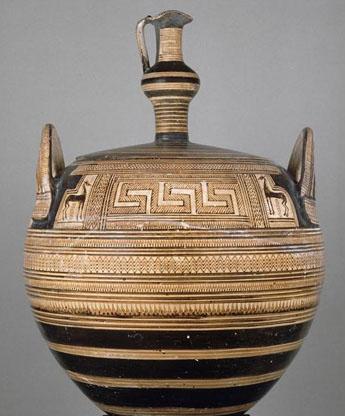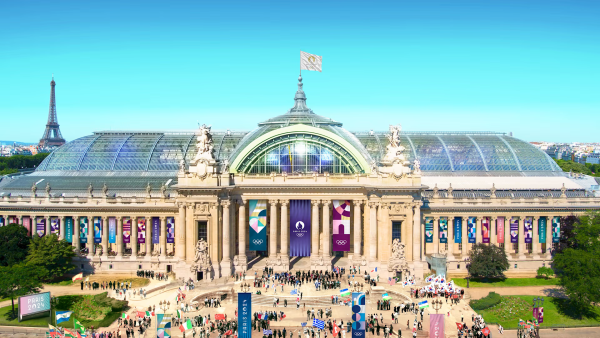Votre panier est vide
Besoin d'inspiration ?
Rendez-vous dans le programme en ligne du GrandPalais
Article -

Les décors des premières civilisations antiques sont souvent schématiques. Formes géométriques, végétaux, animaux et personnages sont représentés de façon très simple. Un même motif est très souvent répété en frise. Des symboles apparaissent.

The decoration of the first ancient civilizations was often schematic. Geometric shapes, flora, fauna and people are represented in a very simple way. The same pattern is often repeated in a frieze. Symbols appear. Middle Eastern craftsmen at first, and later Celts would use arrows, spirals, Greek borders, trisceles, S-curls, swastikas, interlacing, ovals, etc. on a variety of media.
Then, gradually, artists developed a whole repertoire, rich in figurative images: Eastern, Egyptian and Greek gods… heroes in action (sagas of Gilgamesh, Ulysses, Heracles), sovereigns depicted alone or surrounded by people close to them (aristocrats, priests, soldiers, servants, workers), shown going about their everyday duties and tasks.
Representations of military campaigns, on which the great Babylonian, Persian and Macedonian empires were built, are legion. Honouring the victorious side, they decorate the walls of large buildings.
Other favourite subjects : animals, in part inspired by those from the real world like goats, ibexes, lions, boars and horses, and in part by those from the imaginary or mythical world, such as the sphinx, the griffon, the winged bull, and in China the taotie or the dragon.
With the birth of philosophy, in Greece, in the 5th century BC, Man would become increasingly less important in relation to the gods. Portraits of famous people (politicians, philosophers, etc) began to appear. In China, in around the same time, Confucius would also place Man at the centre of his preoccupations. His teachings would leave an enduring mark on Chinese civilization and art.


Votre panier est vide
Besoin d'inspiration ?
Rendez-vous dans le programme en ligne du GrandPalais
See content : 'Les métamorphoses du Grand Palais': a France 5 and france.tv documentary to watch again!

Article -
The Grand Palais is completing the biggest renovation project in its history. For the past two years, director Stefan Cornic has been tracking this metamorphosis with his camera, giving an overview of the multiple events that have taken place in the building since it was inaugurated in 1900. A documentary to watch again and again on France 5 and france.tv!
See content : From Paris 1900 to Paris 2024: the Grand Palais and its Nave, an architectural jewel restored right on time to meet sportsmen and women!

Article -
A regular venue for artistic and cultural events for over a century, the Grand Palais is reopening its majestic restored Nave for the Paris 2024 Olympic and Paralympic Games to become the place for fencing and taekwondo events! And don't forget: this is...
See content : Meanwhile, on the building site, the Grand Palais is back in full colour

Article -
A monument of stone, glass and metal, the Grand Palais blends into the urban landscape. However, on closer inspection, it is in fact bursting with colour, and one of the challenges of the restoration work currently underway is to restore all its chromatic...